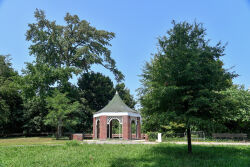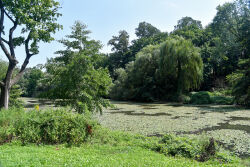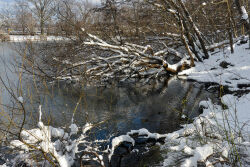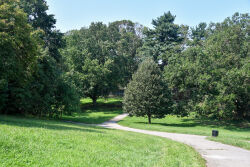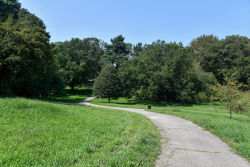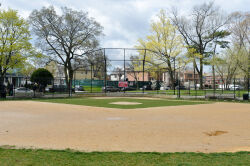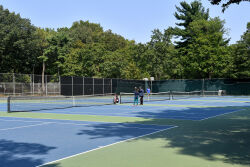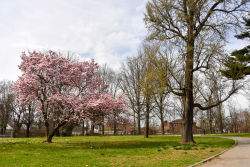Crocheron Park
Crocheron Park
What was here before?
This was the site of Crocheron House, a hotel built in the 1850s on the shores of the Little Neck Bay, that was a popular destination for politicians and celebrities. The Crocheron House burned down in 1907, and the estate remained unused and undeveloped for almost 20 years.
In the days when the Tweed Ring ruled city government (1866-1871), this park was known as a political gathering place. The infamous William “Boss” Tweed (1823-1878) knew the area well and took refuge here after he escaped from the Ludlow Street Jail in 1875.
How did this site become a park?
In 1924, the City of New York bought the land where the hotel once stood. The following year, at the request of the Bayside Civic Association, the City purchased another 45 acres and drew up plans to build a park on the consolidated property. By 1936, the City had turned the area into a park with picnic grounds, winding walks, an enlarged lake for wintertime skating, and thousands of trees.
Since 1936, fields of saplings have grown into a veritable forest, and Parks has added a playground, a dozen tennis courts, a baseball diamond, and a field house. In addition, visitors can also take in the splendid views of Little Neck Bay from either of the hexagonal gazebos that stand on the bluff.
In 2020, the ballfields were reconstructed with natural turf, new fences, and accessible paths and dugouts.
Who is this park named for?
This park is named for Joseph Crocheron (1824-1896), a businessman, hotelier, and racehorse owner from Staten Island.
The Crocheron family immigrated from Europe in the late 1600s and settled in Staten Island where they remained for many generations. Joseph was an 8th generation descendant of the family and owner of the hotel that was on the property, who moved to Queens from Staten Island.
Check out your park's Vital Signs
Clean & Safe
Green & Resilient
Empowered & Engaged Users
Share your feedback or learn more about how this park is part of a
Vital Park System

